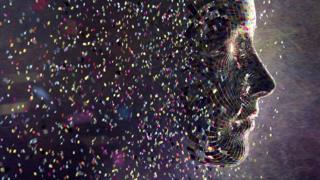AI system ‘should be recognised as inventor’

 Image copyright Getty Images
Image copyright Getty Images An artificial intelligence system should be recognised as the inventor of two ideas in patents filed on its behalf, a team of academics says.
The AI has designed interlocking food containers that are easy for robots to grasp and a warning light that flashes in a rhythm that is hard to ignore.
Patents offices insist innovations are attributed to humans – to avoid legal complications that would arise if corporate inventorship were recognised.
The academics say this is “outdated”.
And it could see patent offices refusing to assign any intellectual property rights for AI-generated creations.
As a result, two professors from the University of Surrey have teamed up with the Missouri-based inventor of Dabus AI to file patents in the system’s name with the relevant authorities in the UK, Europe and US.
‘Inventive act’
Dabus was previously best known for creating surreal art thanks to the way “noise” is mixed into its neural networks to help generate unusual ideas.
Unlike some machine-learning systems, Dabus has not been trained to solve particular problems.
Instead, it seeks to devise and develop new ideas – “what is traditionally considered the mental part of the inventive act”, according to creator Stephen Thaler
The first patent describes a food container that uses fractal designs to create pits and bulges in its sides. One benefit is that several containers can be fitted together more tightly to help them be transported safely. Another is that it should be easier for robotic arms to pick them up and grip them.
The second describes a lamp designed to flicker in a rhythm mimicking patterns of neural activity that accompany the formation of ideas, making it more difficult to ignore.
Law professor Ryan Abbott told BBC News: “These days, you commonly have AIs writing books and taking pictures – but if you don’t have a traditional author, you cannot get copyright protection in the US.
“So with patents, a patent office might say, ‘If you don’t have someone who traditionally meets human-inventorship criteria, there is nothing you can get a patent on.’
“In which case, if AI is going to be how we’re inventing things in the future, the whole intellectual property system will fail to work.”
Instead, he suggested, an AI should be recognised as being the inventor and whoever the AI belonged to should be the patent’s owner, unless they sold it on.
However, Prof Abbott acknowledged lawmakers might need to get involved to settle the matter and that it could take until the mid-2020s to resolve the issue.
A spokeswoman for the European Patent Office indicated that it would be a complex matter.
“It is a global consensus that an inventor can only be a person who makes a contribution to the invention’s conception in the form of devising an idea or a plan in the mind,” she explained.
“The current state of technological development suggests that, for the foreseeable future, AI is… a tool used by a human inventor.
“Any change… [would] have implications reaching far beyond patent law, ie to authors’ rights under copyright laws, civil liability and data protection.
“The EPO is, of course, aware of discussions in interested circles and the wider public about whether AI could qualify as inventor.”
The UK’s Patents Act 1977 currently requires an inventor to be a person, but the Intellectual Property Office is aware of the issue.
“The government believes that AI technology could increase the UK’s GDP by 10% in the next decade, and the IPO is focused on responding to the challenges that come with this growth,” said a spokeswoman.


